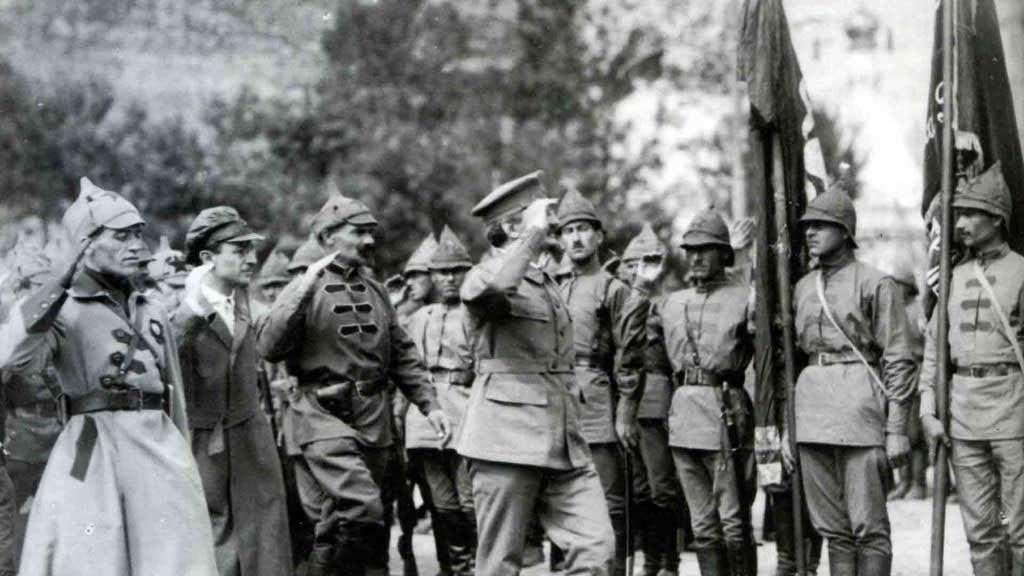1918-1920
The Russian Civil War saw more casualties than World War I. It was the bloodiest military conflict on Russian soil. The extremely brutal White Terror was opposed to the equally brutal Red Terror.

Leon Trotsky Meeting the Red Army Troops. Unknown Photographer (between 1917-21)
Background
The first step for the Bolsheviks after gaining power was to get out of World War I. In March 1918 the Brest-Litovsk Peace Treaty was signed. Ukraine, Finland, the Baltic states and Poland were lost.
Many anti-Bolshevik generals and Cossacks started gathering armies. This militarization was called the White Movement. They were confronted by the newly established Red Army.
Intervention
When World War I came to an end, Russia’s former allies joined their forces to finish the Bolshevik power. Altogether 200,000 foreign troops were brought to Russia.
The commander-in-chief of the Whites in Siberia was Admiral Alexander Kolchak. Commanders Denikin and Wrangel attacked from the south. In October 1919 General Yudenich tried to capture Petrograd, but the attack failed only 50 km away.
The Red Army was commanded by Leon Trotsky. Other notable generals were Antonov-Ovseyenko, Frunze, Tukhachevsky and Budyonny.
The lowest point for the Reds was June-October 1919 when 86% of the territory was in the hands of the Whites. The Reds were in charge of the industrial heartland and the unorganized Whites were unable to break through. The Allies slowly pulled back their forces by November 1920.
Results
Total casualties are estimated at 13 million people. They died on the battlefield, of disease, of war communism (confiscation of food at gunpoint) and hunger.
Russian Civil War
1918-1920
The Russian Civil War saw more casualties than World War I. It was the bloodiest military conflict on Russian soil. The extremely brutal White Terror was opposed to the equally brutal Red Terror.
Leon Trotsky Meeting the Red Army Troops. Unknown Photographer (between 1917-21)
Background
The first step for the Bolsheviks after gaining power was to get out of World War I. In March 1918 the Brest-Litovsk Peace Treaty was signed. Ukraine, Finland, the Baltic states and Poland were lost.
Many anti-Bolshevik generals and Cossacks started gathering armies. This militarization was called the White Movement. They were confronted by the newly established Red Army.
Intervention
When World War I came to an end, Russia’s former allies joined their forces to finish the Bolshevik power. Altogether 200,000 foreign troops were brought to Russia.
The commander-in-chief of the Whites in Siberia was Admiral Alexander Kolchak. Commanders Denikin and Wrangel attacked from the south. In October 1919 General Yudenich tried to capture Petrograd, but the attack failed only 50 km away.
The Red Army was commanded by Leon Trotsky. Other notable generals were Antonov-Ovseyenko, Frunze, Tukhachevsky and Budyonny.
The lowest point for the Reds was June-October 1919 when 86% of the territory was in the hands of the Whites. The Reds were in charge of the industrial heartland and the unorganized Whites were unable to break through. The Allies slowly pulled back their forces by November 1920.
Results
Total casualties are estimated at 13 million people. They died on the battlefield, of disease, of war communism (confiscation of food at gunpoint) and hunger.
Treaty of Brest-Litovsk